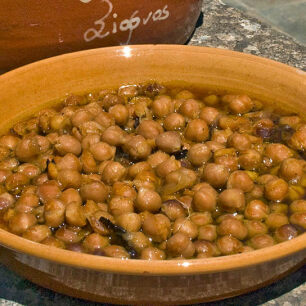Apollonia
Apollonia, the capital town of Sifnos (aka Chora), is built in the shape of an amphitheatre over three hills in the centre of the island. Stroll around the narrow streets and see the whitewashed houses of Chora, which form this traditional Cycladic town. During your evening walk, pay a visit to the Folklore Museum at the Iroon Square (meaning Square of the Heroes).
In every small taverna or classy restaurant in Chora you can sample some of Sifnos’ exceptional dishes cooked by chefs who know how to tempt our taste buds. When the night falls, set out to discover fancy lounge bars and the hottest nightclubs in the island, and dance the night away! Apollonia also boasts elegant hotels, and homey guesthouses.
Artemonas
A few kilometres away from the town lies the traditional village of Artemonas, famous for its neoclassical mansions and its outstanding panoramic view of the island. Some of the most famous restaurants and patisseries of Sifnos will welcome you here with fresh homemade cookies and hot loukoumades (a sweet sprinkled with honey). If you need a laid back holiday with cooler temperatures, then Artemonas is the ideal place to book your accommodation.
Visit the poet’s Ioannis Gryparis house (1870-1942) as well as the confectionery and pottery workshops. Go by the immaculate Panagia Koghi church and Panagia Ammou church where you can view the Panagia Monahi icon depicting the Virgin Mary without the Child. Don’t miss Panagia Gournia church and Agios Nikolaos side chapel, at Agios Loukas village, and see the murals by Agapios (religious iconographer). Stop by Ano Petali with its breathtaking view towards the east and the mainland of the island up to the Castle.
Kastro
Visit this open-air museum, built where the ancient capital of Sifnos once stood in ancient times. The village still stands with its mediaeval structure, stately homes and high density housing, which accentuate the village’s fortified character. The gates, known as lozies, are the main entrances to the village, which were sometimes secured and used as war towers. The houses built on the exterior wall, with a view to the Aegean sea, were inhabited by the middle class whereas the upper class used to live safely away in the centre of the fort protected from pirate raids.
Discover the charming narrow cobblestone alleys and see wooden balconies, coat of arms and ancient columns. Visit the Archaeological Museum where a nice collection of sculptures and pottery artefacts are showcased dating back from the archaic (Geometric period) to the Byzantine Period. Walk up to the church of Eftamartyros built on the edge of a rocky hill overviewing the Aegean sea. Go by the churches of Agios Stefanos and Agios Ioannis (1629) located at the entrance of the village. This is also where the school of the Holy Sepulchre ran (1687 - 1835) and became known as “Paideftirion tou Archipelagous” (The Archipelago’s Educational Establishment). Also significant are the churches of Panagia i Eleousa (1653), Agios Nikolaos (1566), Agios Ioannis Theologos (1617) and Panagia “I Koimisi”(Dormition) (1593), having floors with folk art decorations and the Sacred Altar situated in the exact location of an ancient altar.
Katavati
In Katavati, visit the three-aisled conical domed church of Panagia Angelochtisti, built according to tradition, by angels who celebrate mass there. Fyrogeion monastery (16th c.) is located south of the village.
Exampela
Upon your arrival to this village, located in the centre of the island, you will see multiple rows of windmills (approximately ten) called “Arades”. This is the native village of the poet and academic Aristomenis Provelengios (1850 - 1936) and Nikolaos Tselementes (1878 - 1958), the Greek teacher of culinary and confectionery art. On your way to the lighthouse (Faros), do visit the monastery of Panagia Vrysiani (1642), which houses a Museum of Ecclesiastical art.
Kamares
This is the largest coastal village and port on the island since the late 19th c. Go by the church of Agios Georgios (1785) and Agia Varvara, Fanari (1896) and the remains of the furnaces and the lifting device for loading mineral ore (1883). Enjoy the lovely sunset view from the church of Agia Marina.
Faros
Faros is located in the southeastern part of Sifnos and is considered to be the safest harbour on the island (it used to be its main port until 1883). At the port’s entrance you will see “petrogoleta”, a rocky islet broken away from the land, where the monastery of Panagia Chrysopigi (1650) stands, the patron saint of Sifnos.
Platys Gialos
Platys Gialos is the island’s most popular beach and one of the largest in Cyclades. In the village’s ceramics workshops you will find wonderful local pottery products. It is worth visiting the monastery of Panagia tou Vounou (1813). To the northeast, ancient ruins of a tower were discovered in Aspros Pyrgos [White Tower] location. To the southeast, at the bay’s entrance, lies Kitriani, a private, uninhabited small island where Panagia Kypriani church stands dating back to 1732.
Vathy
A picturesque coastal village built on a virtually enclosed sheltered bay. It is the native village of many ceramicists. Visit Agios Andreas church (1701) and the prehistoric citadel located nearby.
Cherronisos
Cherronisos is a traditional fishing village with a small beach within a picturesque cove.





